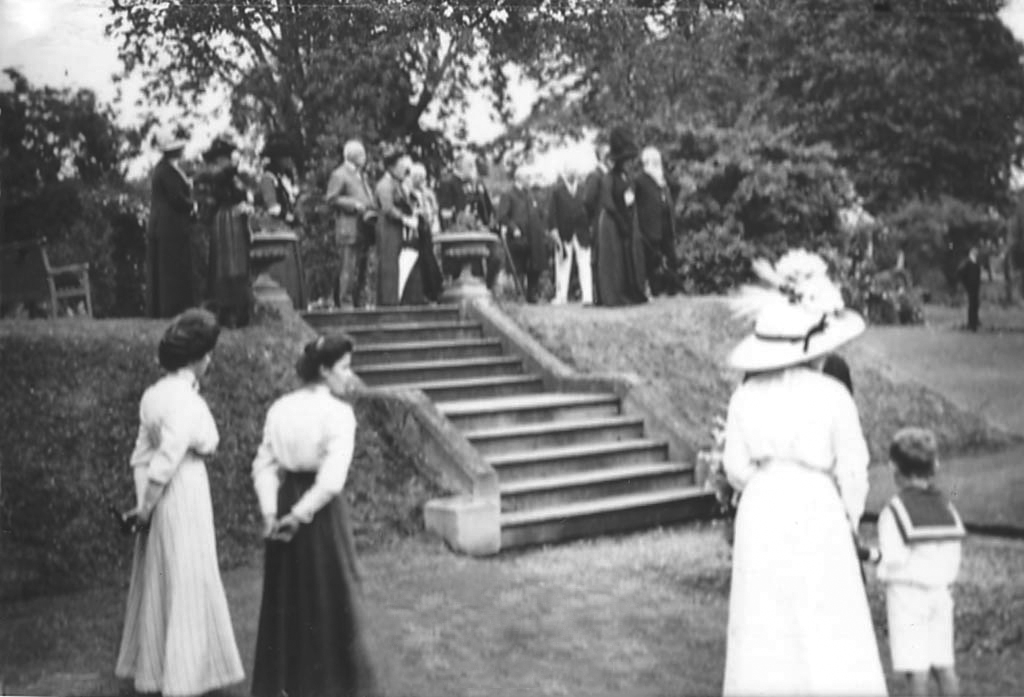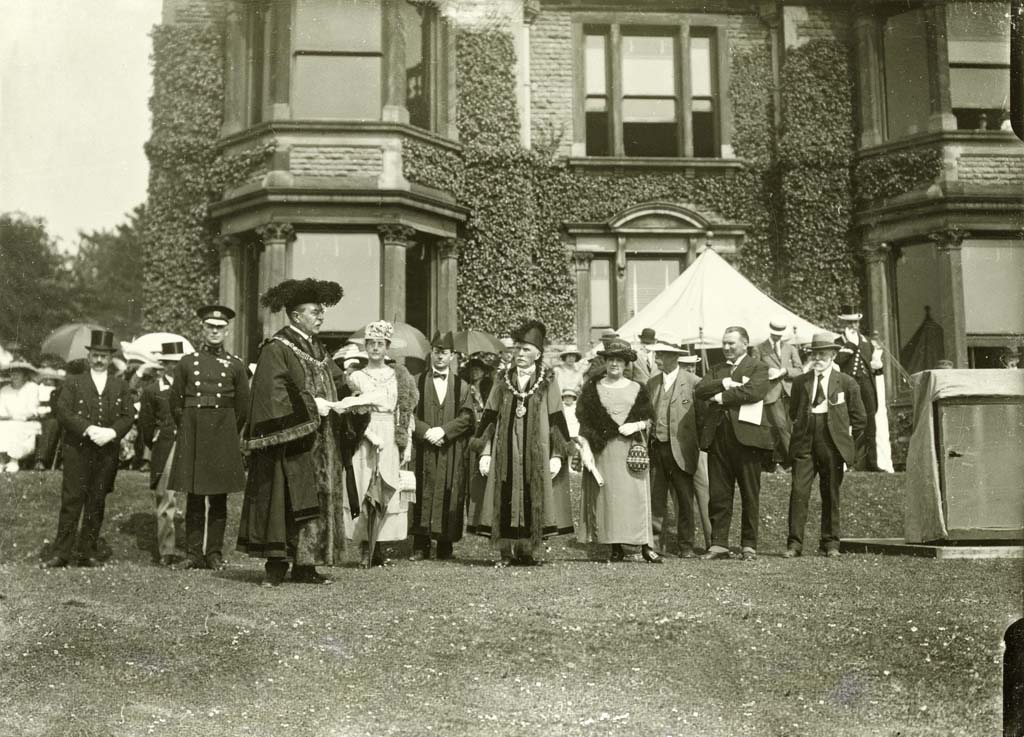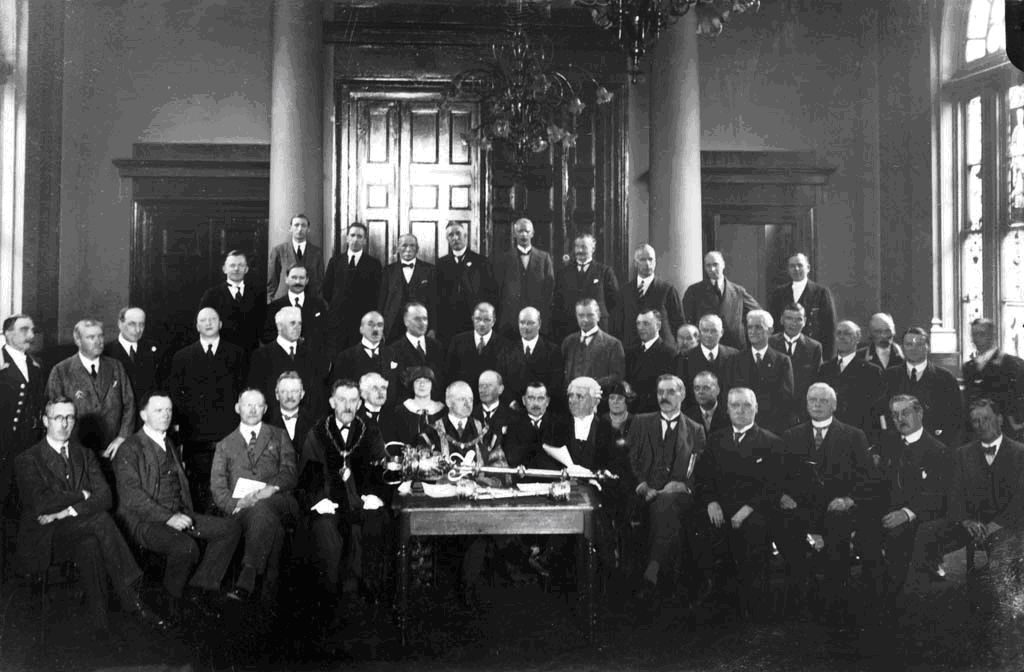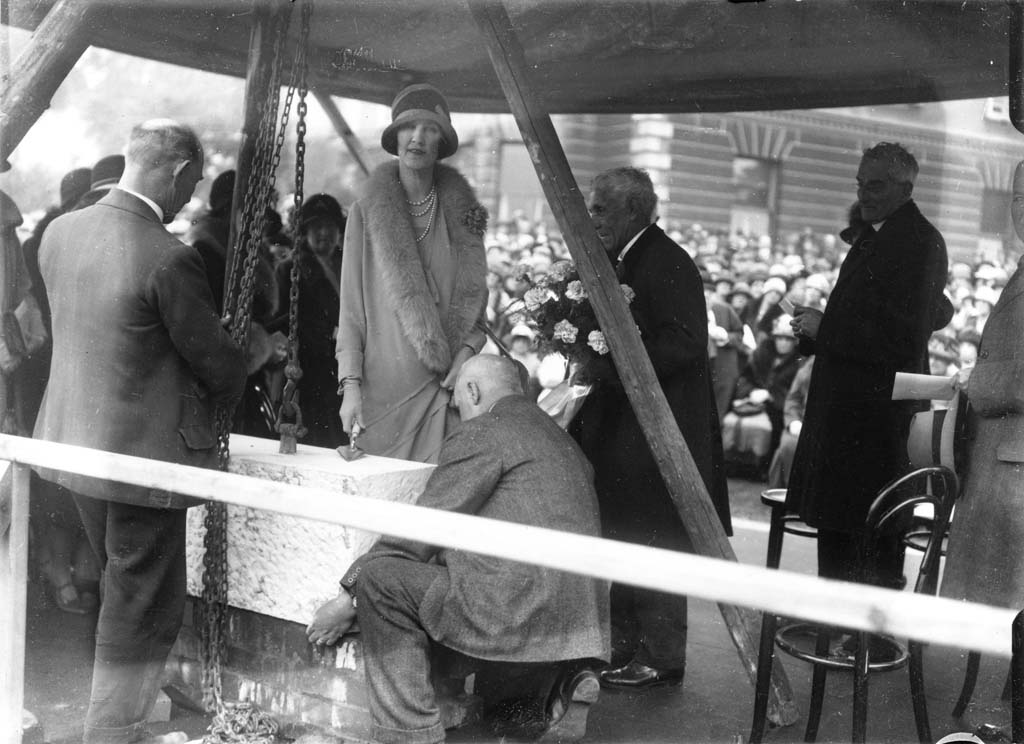Nottingham Elites and Civil Society 1900-1950
Status, Engagement & Lifestyle

Academic Insights:
the Case for - and against - Elite Disengagement and the Breakdown of Urban Civil Society
Summary
20 Century Declinism?
Rationalising Decline
Methods and Approaches
References
Summary
. go to top
20 Century Declinism?
It has long been held to be a truism that the further we moved through the twentieth century, the less civic minded we became, the less likely we were to volunteer, the more socially atomised became our urban spaces. The prosperous and increasingly suburbanised middle-classes, particularly, were thought to have turned their backs on cities, and on its urban governance and its associated philanthropic endeavours. Some talk of the virtual ‘collapse’ of upper-middle-class authority in provincial civil societies in the years surrounding the First World War (Garrard, 1995; Rubinbstein, 1998). Others argue that in some cities civic culture remained vital after 1918, but elsewhere it became an ‘ideology under siege’ (Rodger and Reeder, 2000).
Garden Party, Thurgarton Priory, 1911
Speculatively, this left only those lower-middle-class worthies and the representatives of organised labour to ‘battle over the scraps of what once was a vibrant urban culture’ (Trainor, 2000a). Even ‘optimists’ suggest that by 1900 upper elites increasingly relegated the unpleasant tasks of urban governance – like poor relief - to a ‘lower order’, and instead concerned themselves with the more highly profiled civic ritual of public life and ‘first division’ voluntary activity instead of their earlier involvement in a wide ranging plethora of charitable and civic work (Trainor, 2000b). Yet at the same time vibrancy was being co-operatively reforged within communities, particularly but not exclusively in the world of medical charities, so that the contributory base expanded significantly (Hayes, 2012; Hayes and Doyle, 2013).
go to top
Rationalising Decline
Of particular note is alleged acceleration of business disengagement. Manufactures were fated as both natural and superior local leaders, in demand because of their connections, business accruement and prestige (Nenadic, 1995; Garrard, 1995). The argument for disengagment is constructed around contrasts. Thus, in the nineteenth century manufacturing had strong local representation within civil society. In the twentieth century, however, prominent local industrialists and leading professionals withdrew (Gunn, 2004). The ‘family’ business was increasingly run by the ‘rootless managers’ of corporate capitalism, who held no spatial allegiance to any one city or its institutions. Industry became more pan-national, where the epicentre of control (and the elites themselves) physically moved to London, and many of the staple industries owned by elites declined in importance (Daunton, 1996; Stacey, 1960 ).
Opening Ceremony Woodthorpe Grange 1922
(courtesy of Nottingham City Council)
‘Excessive calls on time’ remained the strongest disincentive to volunteering among higher socio-economic elites (and particularly those involved in manufacturing who faced hard economic times after 1918). All but the most honorific posts required a significant investment in time and frequently cash; indeed some executive posts constituted an alternative, unpaid job (Garrard, 1995; Clements, 1969). . Others feared that domestic staff shortages and the diminution of the ‘leisured class would further reduce the propensity for volunteering (Beveridge and Wells, 1949).
Certainly cities became larger and more diffused - surrounded by mile after square mile of suburban estates. Arguably in itself this promoted a sense of middle-class semi-detachment, while physically making inner urban centres increasingly work-class spaces (Savage,1993; Gunn, 2004) . It’s argued, too, that culturally localism became less attractive: that the upper middle and middle middle classes increasingly identified instead with a broader homogenised national culture. Thus, activities that had previously cemented spatial association while conferred local status and obligation – like philanthropic welfare – became less central to middle-class urban identity (Rubenstein, 1998; Trainor, 1998; Gunn, 2000).
Yet a negative painting of the past is always liable to objection. Hennock reminds us that, in supposedly civic minded nineteenth-century Birmingham, a common complaint then was that the right type of people – that is prominent city businessmen – were not putting themselves forwards as they ought (Hennock, 1975). Indeed contemporaneous constructs of what constituted an ‘ideal’ civic leadership had, by 1900, already changed to incorporate the large numbers of professionals being recruited to civic office. Indeed, if we broaden our definition of elites to include also those respected and moderately affluent men and women of ‘social substance’ already holding ‘influential leadership within towns’, then the argument for disengagement becomes much less persuasive (Trainor, 2000b).

Suburban Growth Nottingham 1900-1950


Nottingham City Council 1926
(courtesy of Nottingham City Council)
Structurally, too, it is certainly true that cities increasingly relied on block grants from the central state, rather than locally raised tax and other revenues, to fund their expenditure. Yet it is equally possible to view the first half of the twentieth century as a period of relative advance, not decline, for local government. a time of renewed urban vitality and increased responsibilities in areas like social housing and welfare where frequently local authorities drove forward a reform agenda (Stevenson, 1984, Hayes, 2007). Moreover, if a younger generation saw themselves as part of a broader eclectic national elite by the 1930s, frequently their parents remained politically and culturally wedded to a pre-war culture of ‘active’ civic engagement through ‘closed’ social networks centred on kinship, religious and political affiliation, charities and business organisations (Doyle, 1997).

Duchess of Portland Laying of the Foundation Stone,
Nottingham Hospital for Women 1928
(courtesy Nottingham Historical Film Unit)
The data that exists to confirm the withdrawal of socio-economic elites from leadership roles in voluntary organisations is even less convincing. Certainly some traditional charities faltered, but others flourished, responding to new social circumstances and expectations (Finlayson, 1994). Within this, charitable benevolence by the wealthy or moderately wealthy was still ‘expected’, even as middle-class identity took an increasingly national persona (Doyle, 1997; Trainor, 1998). Perhaps volunteering demanded less ‘raw’ commitment, making it less ‘crisis-prone’ than local government or poor law administration, with its public scrutiny, electioneering, or bellicose nature (Trainor, 2000a; Braithwaite, 1938).
go to top
Methods and Approaches
Attempts to plot the status of those engaging in twentieth century urban civil society have either been largely impressionistic (based on citing particular leading families or business leaders ) or orientated around one particular criteria – normally occupation – particularly in terms of industrial disengagement or using census definitions of class (which in turn is based broadly on occupational hierarchy). Yet fixing the relationship between individual status and the propensity to volunteer remains problematic. Collecting data on individual wealth for large samples is time prohibitive, and anyway many professional ‘top people’ were not wealthy, but still considered upper middle class. Nor, frequently, is elite status best captured by primary occupation: consider those holding multiple directorships, or having significant commercial rank as an adjunct to their professional practice as lawyers or accountants. An absence of data on individual earnings prohibits the most obvious linking of status to consumption patterns. One further option (Meaning of Home) would be consider property tax, where rateable value related directly to the value of the property. Expenditure on housing was highly income elastic across income ranges. A family’s house was also an inward and outward symbol of its social, financial standing; moving house – ‘up’ or ‘down’ – the surest indicator of changing aspiration or financial circumstance, and for most the single most important expression of their position in society.Using rateable value as a proxy for income enables us to construct a more meaningful measure of individual status than say simply relying on occupation or the other variable used, probate, which captures wealth on death.
go to top
References
Beveridge, W. and Wells A.F. (eds.) (1949) The Evidence for Voluntary Action (London: George Allen and Unwin).Braithwaite, C. The Voluntary Citizen: An Enquiry into the Place of Philanthropy in the Community (London: Methuen: 1938)
Clements, R. (1969), Local Notables and the City Council (London: MacMillan)
Garrard, J. (1995), ‘Urban elites, 1850-1914: the rule and decline of a new squireachy?’, Albion 27, 583-621.
Daunton, M. (1996), ‘Payment and participation: welfare and state-formation in Britain 1900-1951’, Past and Present, 150 (Feb.), 169-216.
Doyle, B. (1997), ‘The Structure of Elite Power in the Early Twentieth-Century City: Norwich, 1900-35’, Urban History, 24 (1997), 179-99.
Finlayson, G. (1994), Citizen, State and Social Welfare in Britain 1830-1990 (Oxford: Clarendon).
Gunn, S. (2000), The Public Culture of the Victorian Middle Class: Ritual and Authority in the English Industrial City 1840-191 (Manchester: Manchester University Press).
Gunn, S. (2004), ‘Class, identity and the urban: the middle class in England, c. 1790-1950’, 31, 29-47
Hayes, N. (2007), ‘Things ain’t what they used to be! Elites and constructs of consensus and conflict in twentieth century English municipal politics’, in B. M. Doyle (ed.), Urban Politics and Space in the Nineteenth and Twentieth Centuries (Newcastle: Cambridge Scolars Press), 47-63.
Hayes, N. (2012), ‘‘'Our hospitals'? Voluntary provision, community and civic consciousness in Nottingham before the NHS’, Midland History, 37, 84-105.
Hayes, N. and Doyle, B. (2013), ‘Eggs, rags and whist drives: popular munificence and the development of provincial medical voluntarism between the wars’, Historical Research 86 (234), 712-40.
Hennock, E.P.(1973), Fit and Proper Persons: Ideal and Reality in Nineteenth-Century Urban Government (London: Edward Arnold).
Meller, H. (ed.) (1971), Nottingham in the Eighteen Eighties: A Study in Social Change (Nottingham: University of Nottingham).
Nenadic, S. (1991), ‘Businessmen, the urban middle classes, and the “dominance” of manufacturers in nineteenth-century Britain’, Economic History Review, XLIV, 66-85.
Perkins, H. (1989), The Rise of Professional Society: England since 1880 (London: Routledge).
Reeder, D and Rodger, R. (2000), ‘Industrialisation and the city economy’, in M. Daunton, (ed.), The Cambridge Urban History of Britain III: 1840-1950 (Cambridge: Cambridge University Press), 553-92 .
Routh, G. (1965), Occupation and Pay in Great Britain 1906-60 (Cambridge: Cambridge University Press).
Rubinstein, W. (1998), ‘Britain’s Elites in the Inter-War Period, 1918-39’, in A. Kidd and D. Nicholls, The Making of the British Middle Class? Studies in Regional and Cultural Diversity since the Eighteenth Century (Stroud: Alan Sutton), 186-202.
Savage, M. (1993), ‘Urban history and social class: two paradigms’, Urban History, 20, 61-77.
Stacey, M. (1960), Tradition and Change: A Study of Banbury (London: Oxford University Press).
Stevenson, J. (1984), British Society 1914-45 (Harmondsworth: Penguin).
Trainor, R. (1998), ‘Neither metropolitan nor provincial: the interwar middle class’, in Kidd and Nicholls (eds.), The Making of the British Middle Class, 203-13.
Trainor, R. (2000a), ‘The middle class’, in Daunton (ed.), Cambridge Urban History, 673-714.
Trainor, R. (2000b), ‘The “decline” of British urban governance since 1850: a reassessment’, in R. Morris and R. Trainor (eds.), Urban Governance: Britain and Beyond since 1750 (Aldershot: Ashgate), 28-46.
go to top
